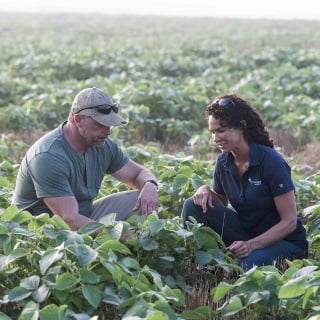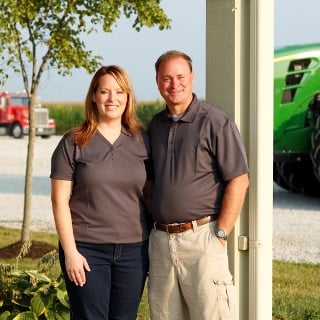There’s no one-size-fits-all approach to successful farm management. From crop production to marketing, agriculture has grown vastly more complex. Still, for the many factors that have changed, there are three commonalities that pave the path to profitability.
#1: A crop production plan that fits the farm
While the actions of Mother Nature weigh heavily on yield opportunities, farmers still play a key role in maximizing yield potential. Selecting the right seed and crop inputs, combined with effective in-season management are primary factors for maximizing yields.
Reaching maximum profitability is a different story. Each field has a distinct history and characteristics that will determine its profit potential. And in a pure commodity production environment, the market determines prices and returns available at the farm level, which are currently at or near cost of production.
The key is to know what the market is offering and what each field is capable of producing, then creating a plan to maximize the return for each field. It could be a maximum yield approach, a minimum cost approach or somewhere in the middle. Being profitable with commodities requires being above average in some way, whether that’s in production output, input costs, marketing revenue, efficiency or some other profitability factor.
#2: True understanding of production costs
Regardless of your business, a good rule of thumb is not to sell your product until you know the cost of production. That’s especially true in agriculture.
Many farmers calculate costs by the acre, but that may not be accurate enough. Grain isn’t sold by the acre; it’s sold by the bushel. Your goal should be to know the production costs of every unit for sale. That requires a thorough understanding of all costs, including fixed costs — not just direct crop input costs. Be sure to include capital replacement, debt payments, family living expenses, taxes, etc.
The next step is to determine a realistic desired market price. Putting your marketing plan in writing is important. It’s easy to get busy in the fields and put off creating marketing plans or to waver from plans that only exist in your head. Having your plan written down and reviewing it regularly can help keep your targets top of mind as prices fluctuate.
Last, it’s important to implement your plan. Volatility is the new norm in agriculture. Marketing can be an emotional task, so sticking to your plan helps overcome some of that emotion when it is time to make the sale. Strong emotions can lead to missed opportunities.
#3: Well-balanced family living expenses
Balancing family living expenses with business profitability is a concern many farmers share.
Larger houses, vacation homes, recreational vehicles and other forms of leisure create fun, memorable experiences for your family, but can add stress if they begin to stretch your financial resources. Assets purchased with available cash during good times are easier to maintain. But when assets are financed, it may be difficult to sustain extra payments and recurring maintenance costs while trying to trim the family budget to help the farm cover its overhead expense.
Every family’s needs are different based upon size of family, age of children and desired lifestyle, but knowing your total family living costs is critical to operational success. Creating a family budget at the beginning of the year will help you determine if your operation can support your living expenses. If something doesn’t add up, you’ll be better prepared to adjust your lifestyle or seek off-farm income sources to maintain it.
With so many responsibilities involved in running a farm, it can be easy for family budgeting to lose priority. Rather than thinking of budgeting as something that limits your family’s quality of life, it may be helpful to consider it something that protects your family’s quality of life for years to come.
In lean times, it’s common to face difficult financial decisions, and it can be challenging to find a way to maintain profitability every year through market ups and downs. But, thoughtful planning can help you find sustained success. You can’t control the grain market, but you can change how you run your operation and how you spend your money.






